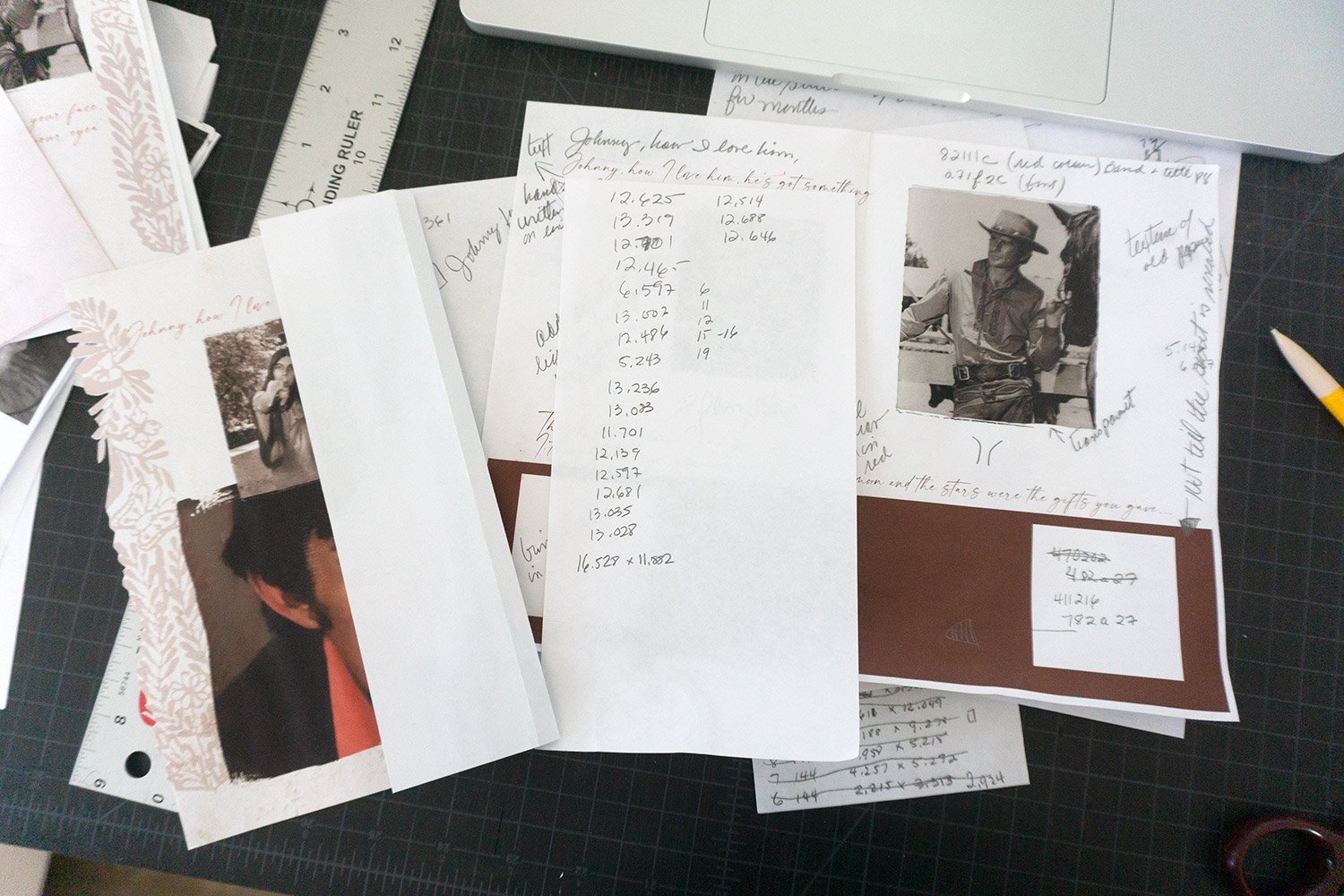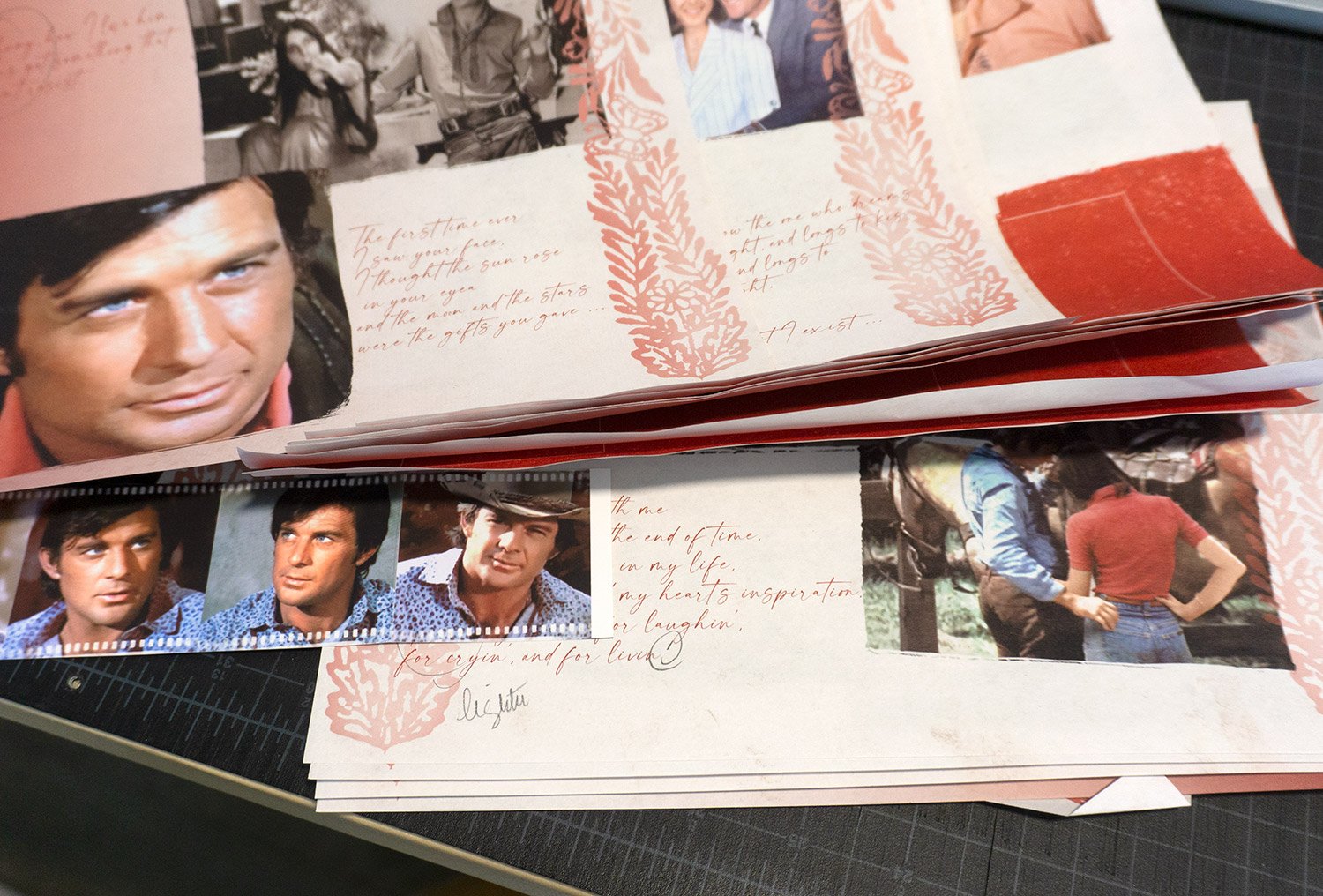IDEATION
Ideate
Explore and illuminate the idea. Arrange thoughts, ready the experience, and preserve the idea. Organize photos, text, songs, sequence… for the book. Muse over the final look of the book.
© 2022 Louise Levergneux
This is the phase Edison was referring to when he said that creativity consists of 1 percent inspiration and 99 percent perspiration.”
This is the stage where the hands-on work begins; this is the phase when the abstract takes shape to give way to the concrete. It would be nice to just idle in the inspiration phase for a while longer but now is the time to discover the solution and make it clear.
This stage is usually relatively brief and involves a strong rush of insight in a short span of time. This time, my idea to gel, seemed to take an eternity! As an artist, one uses a ton of day-to-day reality or events to express themselves and their environment… I appreciate simple moments portraying our lives, whether sensational or monotonous... When an idea strikes me for an artists’ book, it’s because the life experience is fresh and the emotions are in the now. Since our minds manipulate our feelings and the fantasy angst to be portrayed happened 50 years ago, the challenge was to recapture the emotion or experience which was retrospective. The need to relive that teenage crush from afar created moments of self-awareness. The challenge was to relive how I really felt as a teenager and what I believed I experienced back 1968.
© 2022 Louise Levergneux. Sample of photos from personal albums.
© 2022 Louise Levergneux. Sample still images from streaming Lancer episodes.
As a result, I started to arrange my thoughts by organizing photos, text (lyrics of songs) and the potential sequence of the pages from chosen photos. The fundamental design had to represent fun, innocence, a sense of closeness, sensuality, and the complicated sentiments of an adolescent girl. You're just watching TV, minding your own business, when you suddenly identify someone on the screen who scrambles your brain and makes your heart drop to your knees — how to represent this experience? The conclusion is a narration on infatuation, a time of foolish love.
I started with words that to me defined the project: infatuation, dream, fantasy, reality, passion, desire, fascination, captivation, puppy love, celebrity crush, charismatic, attractiveness, allure-ment, enchantment, enthrallment…
While streaming the Lancer TV show, I captured appropriated images, I recreated blissful fiction scenarios utilizing my tool of choice — Photoshop. I wanted to rekindle my ability to implement Photoshop features by creating a new photograph with juxtaposed photos to re-frame my own subject-position and enter into the desires that celebrity crush can evoke in a young adolescent — her dream world.
© 2022 Louise Levergneux. I needed a font that would look like hand writing, after careful search I chose Modernline.
I experimented with text which included mixed lyrics — language of the soul — accompanying the images to prompt us on how memory coexists in dreams.
Prototype
Research content versus binding. Create maquettes of binding and structure. Choosing paper and material to complete the book.
“Infatuation” corresponds to a fiction — journal — and obsessively persistent romantic fantasy of a young female with the actor James Stacy’s persona of “Johnny.” It was a subconscious struggle to determine the proper and most effective design, structure and binding to represent this fantasy world. I was looking forward for all the puzzle pieces to fall into place.
© 2022 Louise Levergneux. The many phases of designing pages.
© 2022 Louise Levergneux. The many phases of designing pages.
© 2022 Louise Levergneux.
The page layout is the first step; it usually helps define the binding structure. I wanted the book to retain an innocent sensual feel. To bring this feeling into effect, adding red organza and strands of red thread became more poignant.
The threads could easily be part of a sewn book, the strands cut long to hang below the bottom edge. Black and white photos or coloured? Maybe add a colour LUT (known as Look-Up Tables in Photoshop to bring a cohesiveness to the pages) LUT's are used in order to apply specific and distinctive effects and style to photos. What about texture?
As for the structure, the first one of interest was the Accordion Binding for its playful pagination as seen below by Annwyn Dean, Alice Simpson or as in my artists’ book Conversation below.
© 2017 Alice Simpson. DANCING ! Unique double-fold, accordion. Original hand-painted paste papers, watercolor, shagreen paper, thread and beads. Against a double layered, paste-paper background; Isadora Duncan, Martha Graham, Vaslav Nijinsky, Bo Jangles, Josephine Baker, Fred Astaire, Cyd Charisse, Gene Kelley, and Michael Jackson dance with joyous abandon in an homage to iconic performers I have always admired on stage and screen.
© 2017 Alice Simpson. DANCING ! Unique double-fold, accordion. © 2017 Alice Simpson. DANCING ! 17”H x 11”W x 1”D x approx. 9’. 5 open
© 2018 Annwyn Dean.
© 2016 Louise Levergneux. Conversation.
© 2022 Louise Levergneux
Then the Drum Leaf binding which I enjoyed when creating my artists’ book “Shadow Me” also spring to mind.
Verification
Transfer the overall idea to the substrate, test the prototype, and evaluate the project, paper, presentation, sketches, and notes. Critique and seek feedback/opinions on already planned prototype options.
I thought the fun aspect of the accordion would present the project’s subject of infatuation in a delightful and colourful way. The narration could be seen in single pages or its entirety. But, after trying a few accordion models, I was unable to settle on any page layout design.
I created a sewn book layout template using InDesign. It was overly rigid of a structure and not useful for some of the images that acquired a need to spread along two pages. The fun was eliminated!
Coming back to the Drum Leaf binding, the structure offered me the opportunity to capitalize on spreads without any visual interruption and gave access to pages for reflection.
© 2022 Louise Levergneux. I thought this little sample was interesting, I could make in a drumleaf structure with an accordion. Great!
With more reflection, I knew that a mixture of structures would pop-up in my mind’s eye. Next month I will share my Storytelling Development and Option Development. “Let ‘er buck”!
On my side, I started a book for the monthly #areyoubookenough challenge on Instagram. This month I was inspired by the "sprout" theme.
This kind of short challenge is perfect for trying new techniques. I don't have too many thoughts or readings for this book. I'm taking the opportunity to try out pop-up folding, which has intrigued me for a while now. At first I tried to figure out the folds, made some, watched some, and see how to get inspired. Beautiful exploration.
© 2022 Guylaine Couture
© 2022 Guylaine Couture
In my photos, I show you the roots I would like to print, calligraphy words and a piece of pop-up model.
I too am in the layout stage right now. Each background of the double-page spreads will be inspired by the explorers' notebooks with drawings and texts, as they used to do back then. I am just beginning the realization of the book. Next month, I will be able to present it to you because it will be finished. One month is really fast. — Guylaine Couture






















